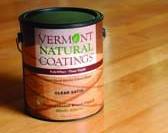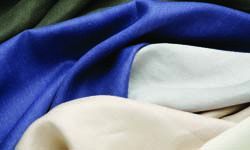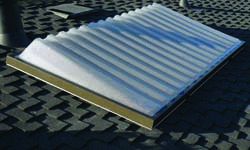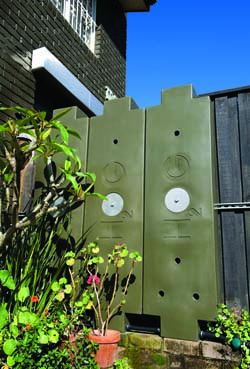
The Rainwater HOG Tank stores water, a precious commodity in Central Florida.
Green Florida: Green and New
Green building. Just 10 years ago, few Floridians had ever heard the term. Today, it’s the hottest trend in real estate, says remodeler Greg Hardwick of Hardwick General Contracting.
And Hardwick ought to know. He’s the Green Building Committee chairperson at the Home Builders Association of Metro Orlando" target="_blank">Orlando (HBA) and one of the region’s leading proponents of eco-friendly construction.
Still, even though people are more environmentally conscious today, they may not always know how to “go green,” says Jim Lucia of the Winter Park architectural firm Lucia and Monday.?
Hardwick and Lucia both have earned the Certified Green Professional (CGP) designation, which demonstrates their expertise in this burgeoning field.
“There are a number of ways for us to be green—nature’s way or technology’s way or a combination of both,” says Lucia. “Nature’s way takes into consideration everything that works with nature: the sun, the wind, the rain, the orientation of the home and whether the windows and doors are placed in a way to harness these natural attributes.”
Technology, Lucia says, includes energy-efficient windows, long-lasting efficient LED lighting, solar panels and other such products. “The best way to have a green home is probably a combination of both,” he says. “Use technology and nature for maximum effect.”
Energy efficiency is driving the move toward greener homes, says contractor Nathan Cross of NWC Construction in St. Cloud. Installing energy-efficient windows and other products in your home is like making an investment in your future, he notes.
“We can save on utility bills every month, and, in time, products such as a solar water heater will pay for themselves,” Cross says.
Many other products with environmentally sound features may peak your interest as well. For example, new standards will dictate that cabinetry be greener in the future, says kitchen and bath designer Dina Masci of Central Kitchen and Bath in Winter Park. She expects to see more eco-veneers or engineered veneers that look like solid wood.
BuildingGreen LLC, publisher of Environmental Building News, prints an annual GreenSpec Directory, which lists more than 2,000 products that have passed a set of environmental criteria set by the editors.
Let’s take a look at some of the top green goods:
> Integrity Block. This compacted-earth block, which can be used in place of concrete, is made with pre-consumer recycled content and requires 40 percent less energy to manufacture, according to the Los Altos, Calif.-based company. Plus, it costs no more than standard concrete block. www.integrityblock.com
> Safe ‘N Sound Emerald Doors. A line of solid-core interior doors from Masonite features DorCor, a low-density core made from rapidly renewable wheat straw. The doors are manufactured without any added urea formaldehyde, which can cause health problems. Also, the doors are certified by the Forest Stewardship Council, which certifies products from responsibly managed forests. www.masonite.com
> PlybooPure Bamboo Flooring. Bamboo is a rapidly renewable grass, which makes it more environmentally friendly than many other flooring choices. But one of the complaints has been the use of formaldehyde in the manufacturing process. Now Smith & Fong is producing the first bamboo flooring to be certified by the Forestry Stewardship Council—and it’s made without formaldehyde. Also worth noting: The company says it uses no irrigation, pesticides or fertilizers to grow its bamboo. www.plyboo.com
 > Natura Paint. Most paints contain volatile organic compounds, which can have adverse health effects on a building’s occupants. Benjamin Moore’s new line of zero-VOC paints and primers is available in all of the manufacturer’s colors and a wide range of sheens. The company promises easy application and outstanding durability. www.benjaminmoore.com ?????????????????????????????????????
> Natura Paint. Most paints contain volatile organic compounds, which can have adverse health effects on a building’s occupants. Benjamin Moore’s new line of zero-VOC paints and primers is available in all of the manufacturer’s colors and a wide range of sheens. The company promises easy application and outstanding durability. www.benjaminmoore.com ?????????????????????????????????????
> PolyWhey Floor Finish. This wood flooring product by Vermont Natural Coatings is an environmentally smart alternative to traditional polyurethane. It’s a clear, durable topcoat seal that uses recycled whey protein—a by-product of cheese making—as a bonding agent. It’s available in semi-gloss and satin finishes. www.vermontnaturalcoatings.com
 > Ecotextiles Natural-Fiber Fabrics. The fabric collection from Seattle-based O Ecotextiles is made from 100 percent organic cotton or other sustainably grown fibers such as hemp, silk and bamboo. The company, founded by two sisters, says its mission is to produce luxurious fabrics in ways that are nontoxic, ethical and sustainable. Manufacturing processes, too, are more environmentally friendly than for typical textiles, and the final products contain no toxic chemical residues. www.oecotextiles.com
> Ecotextiles Natural-Fiber Fabrics. The fabric collection from Seattle-based O Ecotextiles is made from 100 percent organic cotton or other sustainably grown fibers such as hemp, silk and bamboo. The company, founded by two sisters, says its mission is to produce luxurious fabrics in ways that are nontoxic, ethical and sustainable. Manufacturing processes, too, are more environmentally friendly than for typical textiles, and the final products contain no toxic chemical residues. www.oecotextiles.com
> Matrix Total Home System. NTI’s Matrix incorporates a condensing water heater, furnace and boiler and heat recovery ventilator—which is pre-configured for air conditioning—into a single unit. The family-owned Canadian company, which manufactures hydronic heating equipment and furnaces, says the Matrix system is 60 percent more efficient in heat recovery and 30 percent more efficient in water heating than a conventional natural gas furnace and water heater. www.nythermal.com
 > SunCache Solar Water Heating System. The SunCache integral-collector-storage solar water heater from Harpiris Energy uses a roof-mounted polyethylene panel and copper heat exchanger to preheat water. The low-cost, passive system captures heat in 50 gallons of non-circulating water stored in the unpressurized rooftop panel. SunCache is affordable and easy to install, although it’s only intended for use in warm climates. www.harpiris.com
> SunCache Solar Water Heating System. The SunCache integral-collector-storage solar water heater from Harpiris Energy uses a roof-mounted polyethylene panel and copper heat exchanger to preheat water. The low-cost, passive system captures heat in 50 gallons of non-circulating water stored in the unpressurized rooftop panel. SunCache is affordable and easy to install, although it’s only intended for use in warm climates. www.harpiris.com
> Agilewaves Resource Monitor. A California company, Agilewaves has developed a Web-based system that monitors electric, gas and water usage in real-time, while automatically calculating carbon footprint. This enables home and business owners to track performance, manage and control resource consumption, reduce environmental impact and save money. www.agilewaves.com
 > Rainwater HOG Tank. Water is becoming an ever-more precious commodity in Florida. So here’s a convenient modular rainwater storage tank that holds nearly 50 gallons of water that can be used for irrigation, toilets, gardening or laundry. The tank can be installed horizontally or vertically, making it perfect for tight spaces. The Australian company, which has an office in Corte Madera, Calif., says the modules can be placed in your home, fixed to the side of a structure or set under a deck or along a fence. www.rainwaterhog. com
> Rainwater HOG Tank. Water is becoming an ever-more precious commodity in Florida. So here’s a convenient modular rainwater storage tank that holds nearly 50 gallons of water that can be used for irrigation, toilets, gardening or laundry. The tank can be installed horizontally or vertically, making it perfect for tight spaces. The Australian company, which has an office in Corte Madera, Calif., says the modules can be placed in your home, fixed to the side of a structure or set under a deck or along a fence. www.rainwaterhog. com
